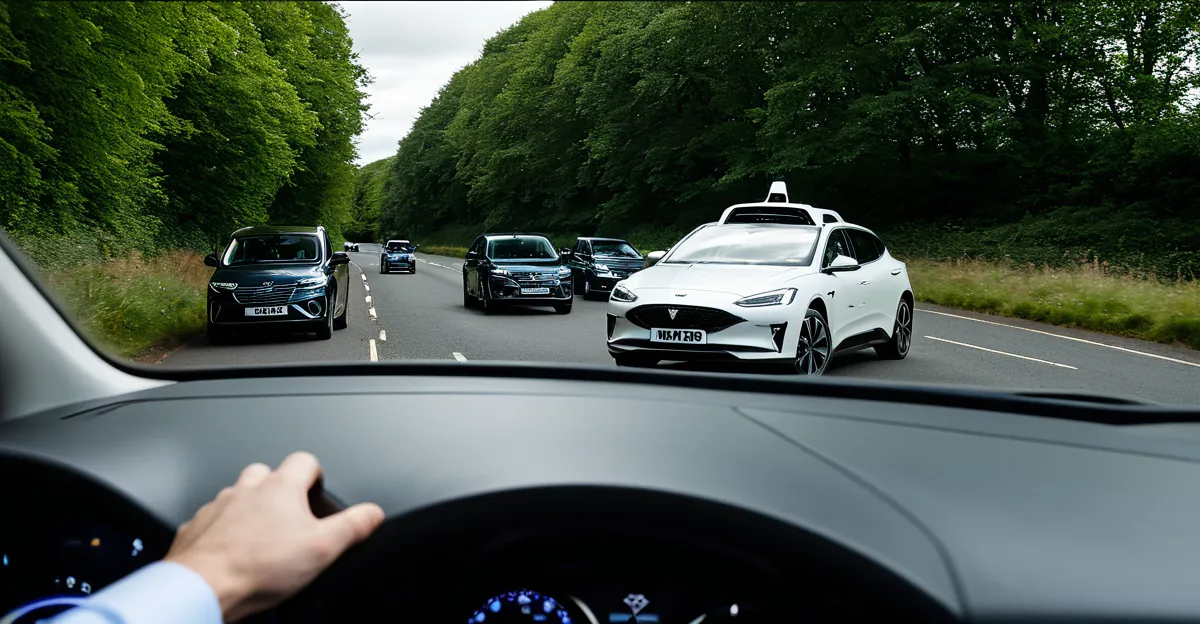Key regulatory and legal barriers to autonomous vehicles in the UK
Navigating autonomous vehicle regulation UK involves overcoming significant legal challenges and policy obstacles. Current UK laws, designed before self-driving technology matured, complicate the deployment of autonomous vehicles. For example, the existing Road Traffic Act assumes a human driver responsible for vehicle control, creating a mismatch with fully automated vehicles.
The approval and testing process for self-driving cars demands rigorous assessment. Vehicles must meet strict safety standards before public road trials, requiring detailed documentation and government authorization. These procedures aim to ensure reliability but can slow innovation due to regulatory gaps.
This might interest you : How is the UK automotive industry addressing autonomous vehicle challenges?
Adapting existing road and traffic rules to accommodate autonomy further presents challenges. Rules on signalling, pedestrian interaction, and emergency scenarios need revision to clarify the responsibilities between vehicle AI and human occupants. This legal ambiguity raises concerns about accident liability and enforcement, underscoring the need for updated frameworks in autonomous vehicle regulation UK.
In sum, while the UK leads in autonomous vehicle research, its policy obstacles and legal frameworks require swift evolution to support broader deployment and public acceptance.
Also to discover : How Are Electric Cars Shaping the Future of UK’s Automotive Industry?
Infrastructure requirements and limitations
The road infrastructure for autonomous vehicles in the UK faces considerable gaps that hinder seamless deployment. Current roads lack widespread sensor-friendly designs and consistent connectivity, which are crucial for precise vehicle perception and communication. This absence restricts the full operational capability of autonomous systems relying heavily on external data.
Urban areas often benefit from better digital infrastructure, yet congestion and complex traffic patterns pose challenges for self-driving cars. Conversely, rural regions suffer from insufficient connectivity and less developed supporting infrastructure, making the UK transport readiness uneven across geographic locations. These disparities impact safety and reliability.
Integrating autonomous vehicles with existing public transport systems also demands upgrades to infrastructure. Smart roads equipped with real-time traffic management, vehicle-to-infrastructure (V2I) communication, and adaptive signalling could facilitate smoother cooperation between AVs and public transit, improving overall transport efficiency.
Addressing these limitations is essential. Without enhancing infrastructure to support autonomy, policy obstacles and autonomous vehicle regulation UK may fall short of enabling fully reliable and scalable self-driving services. Active investment in connected and sensor-enabled roadways is a key step toward resolving these constraints in the UK’s mobility ecosystem.
Safety, liability, and insurance complexities
Ensuring autonomous vehicle safety in the UK involves rigorous testing against performance benchmarks that mimic real-world scenarios. These standards assess system reliability, sensor accuracy, and response to emergencies. Compliance with these benchmarks is crucial for public confidence and regulatory approval.
Accident liability UK poses significant challenges. Unlike traditional vehicles where the human driver is at fault, AV incidents require determining fault between manufacturers, software developers, and vehicle users. This complexity slows legal processes and demands clear frameworks to assign responsibility.
Insurance issues adapt correspondingly. Traditional policies centered on drivers are evolving to cover product liability and cyber risks inherent in self-driving technologies. Insurers must evaluate dynamic risk profiles, balancing technology reliability with evolving regulations.
Addressing these legal challenges requires a multi-stakeholder approach. Legislators, insurers, and technologists must collaborate to devise clear rules that safeguard public interests while promoting innovation. Transparent liability models and adaptive insurance products will enhance trust in autonomous vehicle regulation UK and encourage broader adoption.
Technological and operational hurdles
Deploying autonomous vehicle technology UK faces notable operational challenges that hinder consistent real-world performance. Navigation systems struggle under varied UK road conditions, including narrow lanes, complex junctions, and unpredictable pedestrian behaviour. These factors demand highly adaptive perception algorithms to interpret intricate urban environments.
Severe weather conditions—such as heavy rain, fog, and ice—pose additional obstacles. Sensors like lidar and cameras can be impaired, reducing system reliability. Overcoming these issues requires integrating redundant sensor arrays and advanced weather-resistant software to maintain autonomous vehicle safety.
Interoperability remains critical. AVs must communicate seamlessly not only with other autonomous systems but also with traditional vehicles and infrastructure. This compatibility challenge affects overall traffic flow and safety, emphasizing the need for standardized communication protocols.
These AV operational challenges emphasize the necessity for ongoing research and iterative improvements. Real-world testing under diverse UK scenarios is vital to refine technology performance, ensuring that autonomous vehicle technology UK can handle everyday complexities safely and efficiently. Addressing these hurdles will accelerate broader acceptance and deployment.
Government initiatives and real-world trials
The UK government actively promotes autonomous vehicle development through comprehensive UK AV policies designed to accelerate innovation and ensure safety. Key initiatives include funding for research, streamlined testing procedures, and frameworks that support public road trials. These programs aim to bridge gaps in existing regulations while fostering collaboration across sectors.
Several prominent autonomous vehicle trials UK demonstrate practical advancements. For instance, controlled pilot projects test driverless buses and delivery vehicles in urban and suburban settings, assessing real-world performance and public interaction. These testbeds provide invaluable data to refine technology and regulatory approaches.
Crucially, partnerships between public bodies, academia, and industry drive progress. Universities contribute cutting-edge research, while government agencies facilitate regulatory insights and infrastructure readiness. Industry partners provide technology and operational expertise. This cooperative model strengthens the UK’s position in global autonomous vehicle development.
By combining targeted government support with hands-on testing, the UK creates an environment conducive to safe, scalable AV deployment. These initiatives not only address technical and legal challenges but also build public confidence and build momentum for future mobility solutions.
Lessons from international comparisons
Studying UK vs global AV integration highlights both strengths and areas for improvement in the UK’s approach. Countries like the US and Singapore have advanced international benchmarks in placing extensive real-world trials and faster regulatory adaptations. The UK can learn from their streamlined approval processes and infrastructure investments.
For example, Singapore’s focus on comprehensive smart roads and urban sensor networks contrasts with the UK’s still uneven road infrastructure for autonomous vehicles, especially in rural areas. This gap affects the UK’s overall UK transport readiness for widespread autonomous operation.
Adopting best practices involves harmonizing standards internationally while tailoring them to UK-specific conditions, such as unique traffic laws and weather challenges. Collaboration with global bodies facilitates exchanging data and safety protocols, improving system interoperability.
Furthermore, the UK’s emphasis on public-private partnerships parallels successful models abroad but requires faster policy adjustments to maintain competitiveness. By analyzing international experiences, the UK can refine its autonomous vehicle regulation UK framework, addressing policy obstacles more effectively and accelerating safe deployment.






